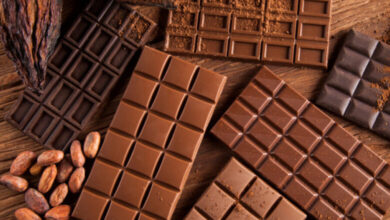Swiss, French and Belgian delights are tipped to become front-runners in the Egyptian chocolate market. Al Masry AL Youm samples high-end favorites
"I used to get a Corona [local brand] chocolate bar whenever a relative visited us and I remember saving my allowance to buy a Rocket [a local iron-like caramel bar covered in chocolate] in the school canteen — the best chocolate in the world," reminisces Dina.
Now a young woman with impeccable taste in chocolate, I found Dina at a gourmet chocolate shop busily choosing sweet morsels for her upcoming engagement. She opts for chocolates wrapped in purple and silver paper. "The colors of my wedding dress," blushes the 25 year old bride to be.
"We get orders like this all the time," boasts Yussif El Mahdi, the shop’s assistant manager. "We’re famous for our taste and style in wrapping and colors. Just look at how the chocolate is packaged."
The over-the-top display may explain why chocolate prices range from LE150 to LE500 per kilo. Throw in a crystal plate or vase to encase your purchase — usually imported from France or Italy — and you’re talking about a couple thousand Egyptian pounds.
The jump in prices, and dramatic increase in choices available, in the years since Dina’s childhood are only one reflection of the changing landscape of the local upper-end food market. For Disney-savvy kids, the plain square of chocolate is no longer enough. And for the better travelled elite, only the melt-in-your-mouth Belgian or Swiss kind of chocolate will do.
In 1992, Swiza was among the first companies to enter the expanding local market for luxury chocolate. In fact, Mohamed Makram, sales manager at Swiza, goes as far as to say that his company "changed the concept" of chocolate in Egypt.
"Chocolate used to only come in the shape of tablets or bars," he explains."And it used to be considered a treat for children. Now chocolate comes in a box or a bouquet and is a treat for both the young and old."
He points out that chocolate now holds a central position at most social events, from engagements and weddings to birthdays. "And at hospitals, visitors used to bring flowers," Makram says."But now they prefer chocolate, which is both delightful and more useful."
The Swiss firm’s chocolate is manufactured locally at a 2000 square-meter factory in Alexandria. "When we first started, we had experts from Switzerland come in to teach us how to make it," he says. "Then we added our own twist: sugar, a lot of sugar, since the Egyptian palate prefers sweet, not bitter."
Swiza may have been a pioneer in the field, but since then, shops manufacturing under foreign labels or importing chocolate directly from abroad have also seen their share of success. The public, meanwhile, appears to have become more discerning in its tastes.
Sherin Mohammed, for example, prefers the Belgian bitter and dark chocolate. So much so that she opened a branch of Dascaliades, a Belgian chocolate company, in Heliopolis, the upscale district of Cairo.
"We’re not the masters of chocolate manufacture in Egypt," she says. "There isn’t a single successful local chocolatier. Most of the local produce has an aftertaste which ruins the experience."
She sits back on her comfortable sofa at the shop, where she also offers tea and coffee, along with — most importantly — over 50 different flavors of Belgian chocolate. The average price here stands at around LE350 per kilo.
The challenge for gourmet chocolate stores in Egypt, she says, are widespread. Shop managers who spoke to Al-Masry Al-Youm attribute the problem primarily to the use of preservatives. "The weather is always hot, so chocolate must be kept in a dry place," explains Swiza’s Makram. "Also hazelnuts are very fragile; they don’t stand the bad weather."
However, Ali El Kholi, manager of a French chocolate shop, believes the aftertaste has little to do with weather. "Chocolate changes its taste only when the date expires," he says. "The weather makes the chocolate change in form, but not in taste."
Makram concedes that production and expiry dates can be an issue. If you look at the labels, chocolate generally expires within a year of production. "But if you take the high standards of Swiss chocolatiers, chocolate is only good for up to three months — and only then if it’s well preserved," he explains.
But whether produced locally or abroad, all high-end chocolate makers insist their products are comprised of only natural ingredients: milk, cocoa butter, cocoa mass and sugar — not to mention any additional nuts, fruits, creams, mint or cinnamon.
They also agree that the most popular varieties among customers are chocolates filled with caramel, cream and nuts — the very same kinds, incidentally, chosen today by Dina for her upcoming engagement.




